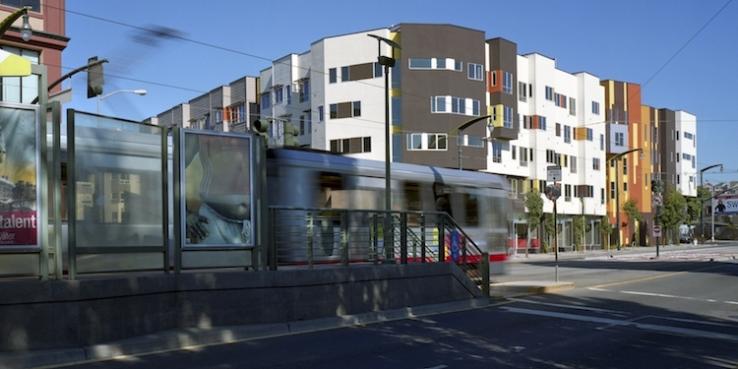Last month San Francisco Mayor Ed Lee signed HOME-SF into law, marking the end of a nearly two-year effort to put into place a smart local density bonus The new law would allow developers to build more housing units and slightly taller buildings in exchange for a higher percentage of affordable units. It marks the launch of a program that aims to create 16,000 new units of housing around San Francisco, 30 percent of it affordable to very low-, low-, moderate- and middle-income households. Without the use of public subsidy, this program will help to fill San Francisco’s need for more housing, particularly for moderate- and middle-income households that have not been well-served in the past.
HOME-SF (originally known as the Affordable Housing Bonus Program) was designed to offer a better option to the state density bonus program. While the state’s program has been around since 1979, San Francisco long considered itself exempt from the requirement because it had its own inclusionary housing law, which requires developers to build a certain percentage of affordable units. After Napa County lost a court case with the state in 2013, San Francisco realized it needed to accommodate the state density bonus law, which does not easily fit with San Francisco’s existing requirements and process, even though it is a key tool for affordable housing in many other parts of the state. San Francisco decided to design a local program that would be more appealing to developers and fit better with San Francisco’s planning process and community priorities.
HOME-SF now offers eligible projects up to two additional stories of height above the zoned limit and removes numerical density controls (i.e., dwelling units per square foot of lot area). It also permits up to three zoning modifications from a menu in the planning code, such as a reduction in parking or open space requirements.
Eligible projects must ensure that 30 percent of the units stay permanently affordable to certain income levels: 12 percent low-income, 9 percent moderate-income and 9 percent middle-income. Eligible projects must be located along commercial corridors in areas of the city with lots of transit and amenities.
Why did this take two years, and why did it pass now? Community outcry at the outset was partly substantive (concerns about residential and small business displacement) and partly political (opposition to any incentives for market-rate developers). The program was amended over the last two years to include increased protections for existing residential uses, historic properties and commercial spaces. HOME-SF also now focuses on larger, more family-friendly units, a topic that has gotten more interest in the last year. Significantly, the public now acknowledges that something needs to be done for San Francisco’s middle class. HOME-SF addresses that need without coming at the expense of lower-income households. However we got here, we’re glad to be here.
Kudos to Mayor Ed Lee and Supervisor Katy Tang, the legislation’s primary political champions; to SF Planning’s staff, who crafted and re-crafted HOME-SF over the last two years; to our fellow advocates, who tenaciously pushed for the program when the going got tough; and to the SF Board of Supervisors, which passed it unanimously in May. SPUR is pleased to see the passage of a program that grows and protects communities across San Francisco.
